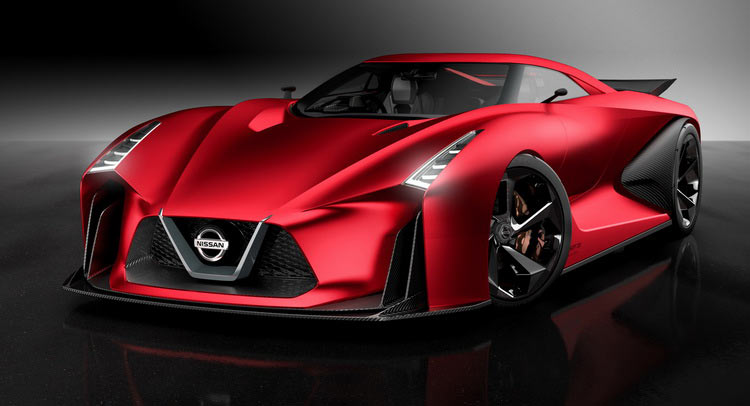It may not come out until 2018 but, surprisingly, we do know quite a lot about the next-gen GT-R.
For starters, it will have a hybrid powertrain derived from that in the LM Nismo racer. Ben Bowlby, the project’s technical director, has openly said, while speaking about the twin-turbo 3.0-liter V6, that “its combustion technology and integration of turbo and intake system within the head design is all very interesting and highly applicable to the road”.
He even went a step further, identifying it as “an early ancestor of what will be a future GT-R engine”. He didn’t go into detail about the electric parts, but they will probably add low- and mid-range torque while reducing fuel consumption and CO2 emissions considerably.
It will also retain the same 2+2 coupe format and its styling is expected to feature some elements from the 2020 Vision GT concept that’s pictured here.
So, that’s that then. Or is it?
Nissan’s European EV Director, Gareth Dunsmore, told Top Gear that a future reiteration could go all-electric: “We can’t build an electric GT-R today. But do I want to? I’d love to! Will we be able to do that in the future? I can’t see a technical reason why we wouldn’t be able to implement electric vehicle technology in something like a performance vehicle.”
Why go there in the first place, though? Isn’t the hybrid GT-R supposed to be the next step in Nissan’s supercar evolution? One may interpret Dunsmore’s comment that “the rate of change over the last five years has been phenomenal” as a thinly veiled reference to Tesla’s success with the all-electric Model S P90D, which can outrun almost any rival and still be completely emissions-free.
Elon Musk, you’d better watch out: Nissan’s CEO Carlos Ghosn may not have inspired Hollywood’s Iron Man, but he is a formidable opponent who gets things done no matter what.









